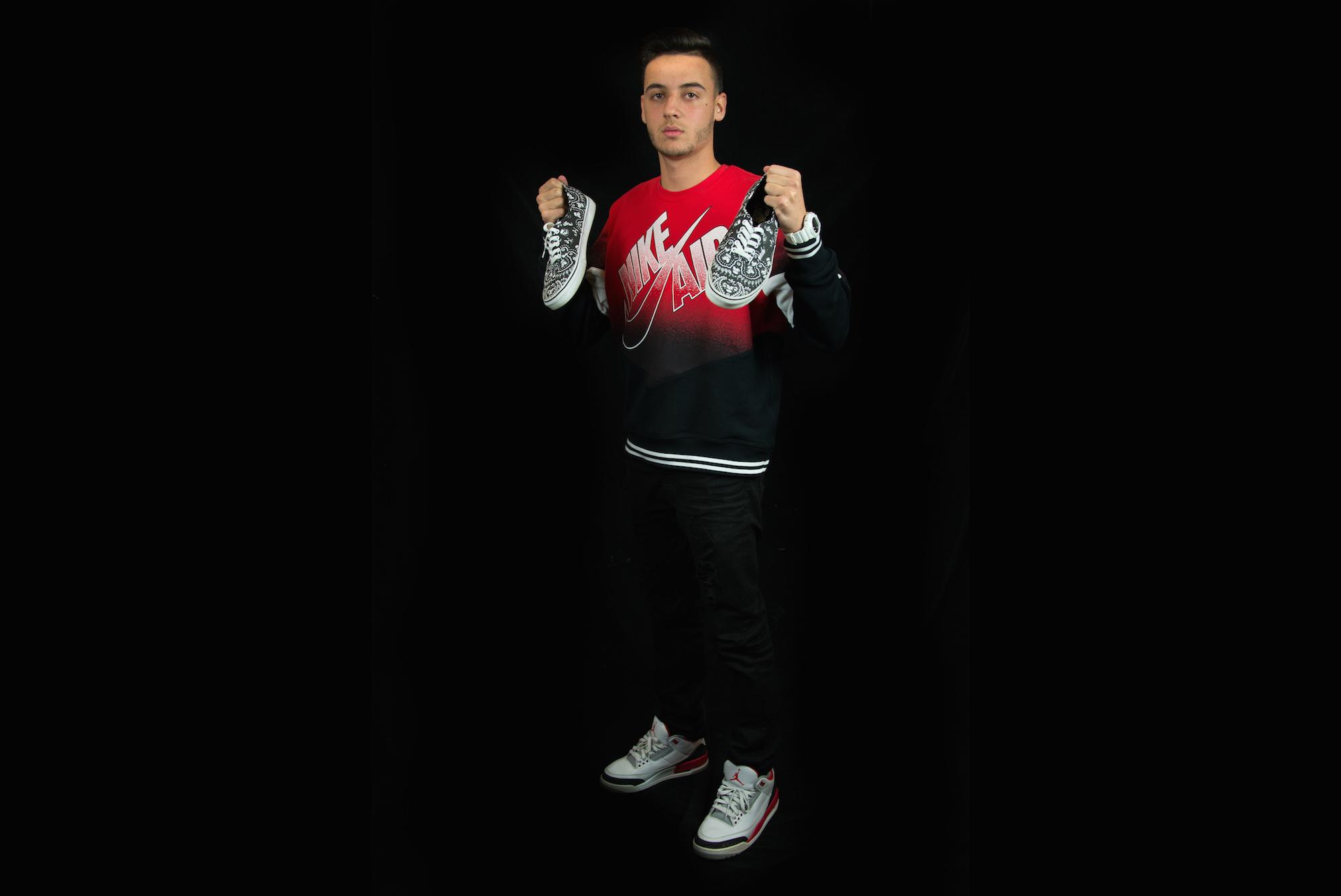Hegene Lee doesn’t consider himself a sneakerhead. And, after pocketing $300 on a pair of shoes he never intended to wear, he still doesn’t consider himself a sneakerhead. Lee, a Palo Alto High School senior, spent months researching the the Nike Supreme Foamposite shoes, waiting for them to drop as part of the release each Thursday. Entering the resale market, was always tempting, he says, for it’s virtually guaranteed that a limited edition shoe from a dominant brand such as Nike will have a price tag that soars.
Three days after Lee beat out store lines that wrapped around the block and computer “bots” on the Internet in getting his hands on a pair of Foamposites, he exchanged them for a cool profit of 400 percent, through an Instagram contact. Yet this was the last time Lee entered the resale market.
The modern sneakerhead can be characterized as a full-time reseller, eagerly anticipating the drop of various limited edition shoes, stockpiling them as deadstock, and selling them once more. In essence, the modern sneakerhead has taken sneakers off feet and put them back on the shelves. Websites such as Stock X, considered the Kelly Blue Book of sneakers, list shoe prices and update them each minute, leading one to possibly confuse the modern shoe with a corporate stock on the Nasdaq. Forbes estimates that the sneakerhead presence on the shoe market amounts to 5 percent of the $22 billion sports footwear industry in the United States.
It wasn’t always this way. When the Air Jordan hit the shelves in 1985 and gave birth to the sneakerhead movement, collectors collected simply because they loved wearing shoes.
As senior Martin Manasherob describes it, lacing up his first pair of Jordans was special; they were the first pair of shoes that he could wear on a day-to-day basis and play basketball in; they were one of the first pieces of footwear to bridge the gap between leisure and athletic shoes.
“People saw [Michael] Jordan and looked up to him, and loved that they could wear the shoes he wore in court out in public,” Manasherob says.
While the Air Jordan 1 took center stage between 1985-1986 in 17 different color combinations, in 2015, the brand released over 18 distinctly different models. With each athlete looking for something different to add to his or her game, it may seem as though brand like Nike are simply making an effort to tailor their products to more individuals.
But, as Manasherob sees it, the influx of limited edition models isn’t helping more shoes get on people’s feet, but rather, from the shelf in the store to a display case at home.
“It’s really hurting the game because first of all, people who would actually want to wear those shoes don’t have them, because they are sold out,” Manasherob says. “And the people who actually own the shoes are too scared to wear them and scuff them up. It’s like getting a new car; you know that as soon as you drive it off the lot, the resale value is gonna take a huge hit.”
The deadstock piling of sneakers and the influx of more limited edition shoes have driven out some of the older collectors, with the new emphasis on money. Senior Bo Field held a deep interest in sneakers in middle school, yet found it hard to maintain as he grew older.
“My personal style changed, so I could no longer justify spending money on shoes that were cool and iconic, that I would no longer wear,” Field says.
Like Manasherob, former Nike intern Alex Zhang’s first pair of basketball shoes were Jordans. Yet after working in the Material Science Department of Nike over the summer, his outlook changed as he began to understand the difference between the limited edition brands like Jordans and performance shoes.
“Previously, basketball players would suit up in shoes like Converse, so by comparison, the Jordans were a high performance shoe,” Zhang says. “However, technologies of today, such as Flyknit and Flywire, offer enhance performance not found in the Jordans.”
Zhang tested materials for the outsole, the key structural element to a shoe. He no longer wears Jordans, as the price isn’t justified by the lack of attention to the outsole and the focus on the color scheme of the upper.
Manasherob is unsure why owning a collection of shoes is treated differently than expressing yourself through clothing. One possibility that Manasherob considers is that, compared to clothes, shoes are often quantified as a dollar value rather than an accessory. With more limited edition products flooding the market and trending on social media prior to their release on the shelves, public awareness is hightened.
“Owning a lot of shoes immediately is associated with being privileged,” Manasherob says.
As someone who pieced together his collection, saving lunch money a few times a week to finance a pair, Manasherob believes the average shoe collector isn’t someone who finds it easy to fork out the cash.
“I don’t buy a pair of shoes because they are popular or highlighted in the media,” Manasherob says. “I buy them because I like the way they look.”

